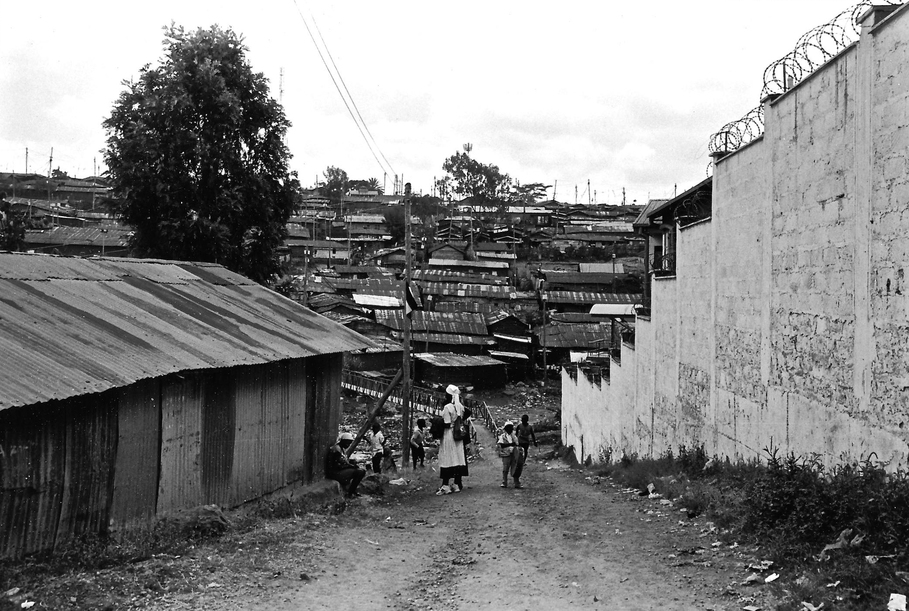
Intimate Realities: Portraits from the Slums of Nairobi
Photographer: Jon Hughes
Exhibit Title: Intimate Realities: Portraits from the Slums of Nairobi
Location: Kenya
Kibera, situated in the heart of Nairobi, Kenya, is one of the largest slums in Africa with an estimated population between 250,000 to 1 million people crammed into an area of approximately 670 acres. Dagoretti, a less populated slum, was a rural village 40 years ago. Today it is a congested, highly dense, noisy, dusty or muddy suburban slum.
The United Nations defines a slum household as: "...a group of individuals living under the same roof lacking one or more of the following conditions: access to improved water; access to improved sanitation facilities; sufficient living area - not more than three people sharing the same room -; structural quality and durability of dwellings; and security of tenure." This definition is appropriate to both Kibera and Dagoretti.
It is a difficult life, particularly for women who daily collect water, obtain and prepare food, wash, and care for children. Communal toilets and personal bathing facilities are rare and often unusable. Electricity is not affordable.
Yet, some residents maintain a quiet dignity in this difficult and often dangerous milieu.
Sean Hughes provided digital images from silver gelatin prints.
Excerpts from the "The Intimate Realities of Water" documentary film script written by Adrian Parr are used with permission in the abstract and captions.
The photographs in the exhibit "Intimate Realities: Portraits from the Slums of Nairobi" were a significant contribution to the documentary film "The Intimate Realities of Water" independently produced and co-directed by Adrian Parr, UNESCO Chair of Water Access and Sustainability.
The award-winning documentary film employed the unique combination of color video footage with sound, provided by co-director and cinematographer Sean Hughes, and my black and white still images.
Parr said the documentary "...is a series of cinematic portraits that examine the power dynamics of water and slums. The film is a social commentary that also chronicles the complex relationship between water, poverty, gender, sanitation, health, and development in shantytowns."
My responsibility as director of photographty was to capture candid images of the women and children in Kibera and Dagoretti in their every-day life to compliment the narrative.
The photographs were taken with Leica M7s using either a Summilux-M 1:1.4/50 ASPH lens, a Summilux-M 1:1.4/35 ASPH lens, or (rarely) a Summilu-M 1:1.4/75 lens with Kodak Tri-X film. I processed the film in T-Max developer using Ilford fixer. Silver gelatin prints were made on Ilford paper (pearl) and then scanned for digital transmission.
University of Cincinnati Taft Research Center
Dodd Camera
Jon Hughes, 1549 Pullan Ave., Cincinnati, OH, 45223-2164, USA. Cell: 513-763-9934. jonhug1945@gmail.com.
Make Comment/View Comments